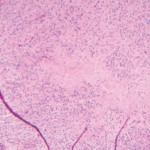 CHICAGO—Although rare, when a patient has both primary immune deficiency and autoimmune disease, the combination can lead to life-threatening complications requiring careful, long-term therapy.
CHICAGO—Although rare, when a patient has both primary immune deficiency and autoimmune disease, the combination can lead to life-threatening complications requiring careful, long-term therapy.
In When Immune Deficiency and Autoimmunity Coexist, a session at the 2018 ACR/ARHP Annual Meeting, M. Eric Gershwin, MD, the Jack and Donald Chia professor of Medicine and chief of Rheumatology, Allergy and Clinical Immunology at the University of California, Davis, School of Medicine, Sacramento, discussed autoimmunity in a subset of patients with primary immune deficiencies and how to manage these complex conditions.
Rare & Rarer
Over the past 50 years, research has revealed a higher incidence of autoantibodies and disease in patients with primary immune deficiency, such as Wiskott-Aldrich syndrome.1 In this very rare immune deficiency disease, patients are less able to form blood clots. They are at higher risk of developing rheumatoid arthritis (RA) and hemolytic anemia. Why do these links exist? Clues may lie in the patient’s genes, as well as how genes are methylated, said Dr. Gershwin.
“There are about 300 [primary immune deficiencies] recognized at this time, and most are caused by genetic abnormalities,” he said. “They involve an inherent deficiency in the innate and/or adaptive components of the body’s immune response.”
To identify patients with primary immune deficiencies, “the things I look for are documentation of repeated sinus infections. Not sinusitis or ‘my head hurts,’ but a sinus image that is repetitively abnormal. Look for repetitive episodes of pneumonias, and persistent infections that just don’t seem to resolve. Those are the major hallmarks,” along with thrush and family primary immune deficiency history, said Dr. Gershwin.
Due to earlier diagnosis and treatment with intravenous immunoglobulin, as well as bone marrow transplantation or stem cell transplantation, patients with primary immune deficiency now live longer. Therefore, physicians are detecting complications later in life, including autoantibodies and autoimmune disease, and the primary immune deficiency/autoimmunity combination presents treatment dilemmas for the physician.
CVID
Common variable immune deficiency (CVID), which affects about one in every 25,000 Caucasians, is the most common primary immune deficiency.2 CVID patients have marked serum reductions in both IgG and IgA, and about half have reduced IgM. Additionally, if IgA and IgM are also low, this combination is a strong sign of CVID.
The disease affects both men and women equally. Often, CVID patients present with upper airway infections, followed by infectious diarrhea and septic arthritis. But they may also have autoimmune diseases: hemolytic anemia, autoimmune thyroid disease, RA and juvenile RA. They may also have enlarged lymph nodes and spleens, as well as bronchiectasis. Patients may have an increased risk of gastric carcinoma, most commonly due to co-infection with H. pylori, said Dr. Gershwin.

